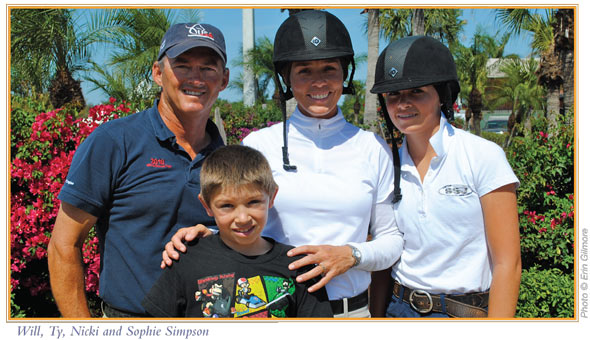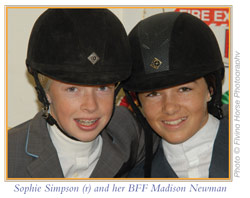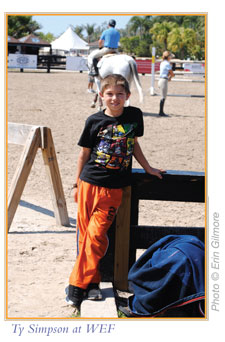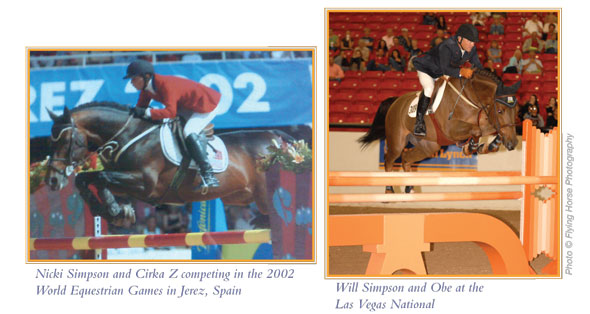By Llewyn Jobe
Un-Expectations
In my last article, I addressed the EHV scare we were all experiencing in the world of equine activities. Since then, things seem to have calmed down with EHV. Scotty (my horse that I adore) and I competed in two of the six shows we had planned on this season. We were Champion in our Hunter Division at the first show and Reserve Champion in the second show. I do miss my barn and the shows in California, but I have to say that I have adjusted to my new barn, as well as the smaller shows here in North Texas and I can see the benefits of both.
I’ve mentioned that Scotty and I are very focused on our training since moving back to Texas. As our results indicate, training is going well and there are definite improvements in my riding and Scotty’s development. We are both stronger and more focused in the ring, with a better understanding of what needs to be done in order to accomplish our goals. However, it’s hard to predict what obstacles may come into play and how to overcome those obstacles when dealing with these magnificent, high-powered equine athletes. When I purchased Scotty, he was five years old with a lot of potential, but it was clear to me I had my hands full. Previous to me, he was destined to be a stud on a farm. The economy took a turn for the worse and plans changed. He was gelded at four years old and then began training as a jumper. When I tried Scotty, although he was well-bred, his training and ground manners had a long way to go. It was clear to me and my trainer that he could jump, but that was about all he could do, he was essentially uneducated on the flat. Knowing that there is a lot of flatwork that takes place in order to have a great jumper, we had our work cut out for us.
The first day Scotty arrived at my barn in California, his ground manners left a lot to be desired. He was not a mean horse, but he did not respect me or my space. He was very mouthy, impatient and had his own ideas about where he wanted to go and what he wanted to do. Truth is he acted like a stud that was cut late. Of course, the excitement of finally getting my own horse after all these years helped me to overlook this naughty behavior. He did show signs of improvement as time went on and I am grateful for the barn in California where they handled Scotty for me and taught him a bit more about manners.
Fast-forward to today. The barn we moved to in Texas is much more hands-on, I do a lot more of the handling and grooming myself. It offers the same high level of training as the barn in California, just not full grooming services. But that was the point of moving back to Texas, to spend less money and have more time with Scotty.
Well, Scotty is coming into his prime now, having just turned seven in April. He was bred to be a big athletic animal and he has grown into himself. Once under saddle and in the ring, he knows it’s time to work. Since he is still a youngster, getting him to focus at times is challenging, but he eventually comes around. It’s funny how karma works. Scotty reminds me a lot of myself a lot when I was growing up – at times disrespectful, willful and occasionally unwilling to be disciplined. However I would usually listen to reason and wasn’t a large, strong force when I misbehaved. At almost 17 hands, Scotty is too big to be disrespectful.
He still acts a lot like a stallion on the ground and lately he has started to exhibit some unseemly behavior. When angered or frustrated, because he is being reprimanded and asked to behave like a nice horse should, he has started to stand on his back legs. My instinct is to hold on to him and make him behave. But it is unnerving to see his large hooves high up above my head. So, the last two times he’s done this, I turn him loose and he runs off, calms down and I catch him. This is unacceptable behavior and must be addressed. So, what is the answer to my latest equine challenge? I don’t have the knowledge or experience to address such behavior. So my trainers in Texas helped me find a man who does.
Enter Roger Daly Horses in the Aubrey/Pilot Point area of North Texas. Roger is well 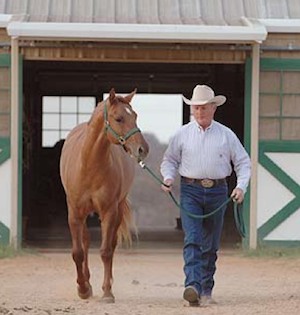 known for his ability and success with horses. He preps up to 300 young horses for major sales and breaks about 100 horses per year. While I’m off to Spain for two weeks with my family, my trainers thought it would be the perfect time to send Scotty to Roger for some discipline training. When I delivered Scotty to Roger’s place, I was immediately impressed with his facility. Roger spent some time with me so I could ask a few questions and feel comfortable with leaving my sizable investment (literally and financially) with him.
known for his ability and success with horses. He preps up to 300 young horses for major sales and breaks about 100 horses per year. While I’m off to Spain for two weeks with my family, my trainers thought it would be the perfect time to send Scotty to Roger for some discipline training. When I delivered Scotty to Roger’s place, I was immediately impressed with his facility. Roger spent some time with me so I could ask a few questions and feel comfortable with leaving my sizable investment (literally and financially) with him.
Roger stated that, “A lot of the English discipline horses we get like Scotty are often times not broke properly, or started good to begin with… they lack a proper foundation. Bad behavior is tolerated as long as they win in the show ring. Typically in a case like Scotty’s, we achieve a high level of success with the majority of the horses we work with.”
I already look forward to returning from Spain. When I pick Scotty up, I will update you on his progress… So stay tuned!
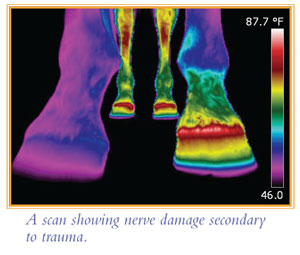 terms cause anguish and often unanswered questions for horse owners and trainers. When ‘saddled’ with a soundness issue, it can be comforting to literally get a picture of what is happening. In color no less. Enter Equine Infrared (IR) – an International Network of Certified Thermographers, trained in the application of Equine Thermography.
terms cause anguish and often unanswered questions for horse owners and trainers. When ‘saddled’ with a soundness issue, it can be comforting to literally get a picture of what is happening. In color no less. Enter Equine Infrared (IR) – an International Network of Certified Thermographers, trained in the application of Equine Thermography.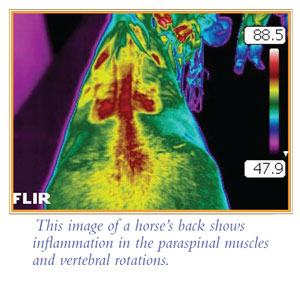 Thermography is also used as a tool in human diagnostics, but its applications are just beginning to be put to use in the sport horse industry. In the early ’90s, attempts were made to put IR imaging into practice for horses, but with large, bulky cameras, and little knowledge about how to prepare an image, the method lost popularity.
Thermography is also used as a tool in human diagnostics, but its applications are just beginning to be put to use in the sport horse industry. In the early ’90s, attempts were made to put IR imaging into practice for horses, but with large, bulky cameras, and little knowledge about how to prepare an image, the method lost popularity.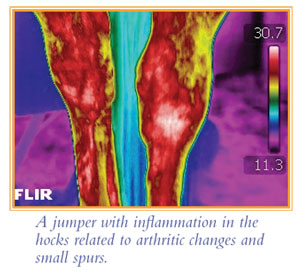 “But we use IR in everything from horses that have slipped and fallen and sustained nerve damage, to small fractures to hoof issues. When an area is inflamed, we can see it and then assess it further to find the source of the irritation.”
“But we use IR in everything from horses that have slipped and fallen and sustained nerve damage, to small fractures to hoof issues. When an area is inflamed, we can see it and then assess it further to find the source of the irritation.”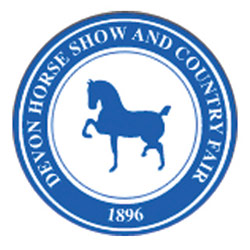
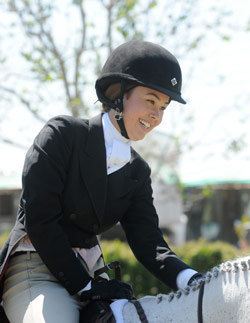

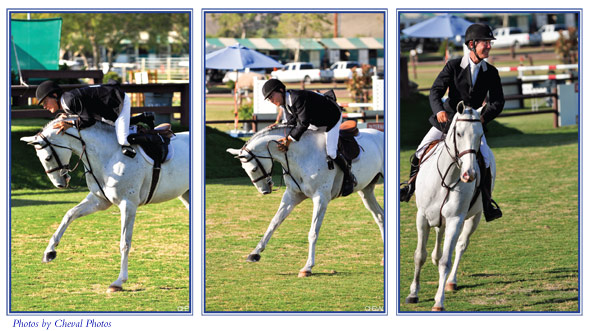

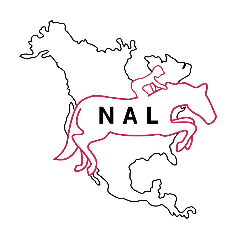
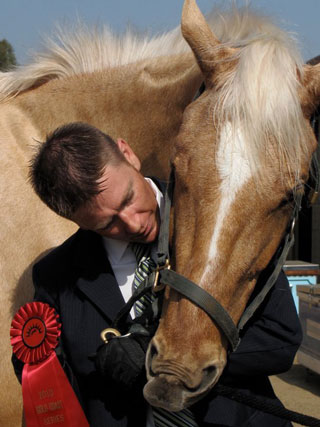 As an adult amateur rider with a relatively green horse, I made a goal to aggressively prepare for the 2011 show season. Much to my dismay, my trainers took us down a few levels in the hunter ring to focus on strengthening and conditioning us both before moving back up to the level we were competing at in California. Persevering, Scotty and I have competed at several small spring shows in Texas and have been gearing up to do a series of six shows over six weeks during the second half of May and all of June. As you can imagine I was anxious to get to the shows and prove my ability to nail those eight jumps in the hunter ring, so I could move back up to the jumpers.
As an adult amateur rider with a relatively green horse, I made a goal to aggressively prepare for the 2011 show season. Much to my dismay, my trainers took us down a few levels in the hunter ring to focus on strengthening and conditioning us both before moving back up to the level we were competing at in California. Persevering, Scotty and I have competed at several small spring shows in Texas and have been gearing up to do a series of six shows over six weeks during the second half of May and all of June. As you can imagine I was anxious to get to the shows and prove my ability to nail those eight jumps in the hunter ring, so I could move back up to the jumpers.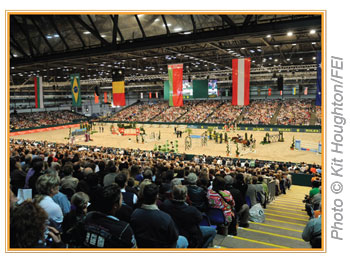
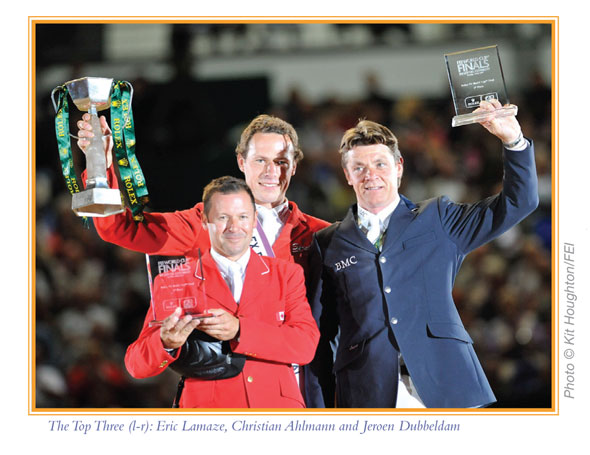
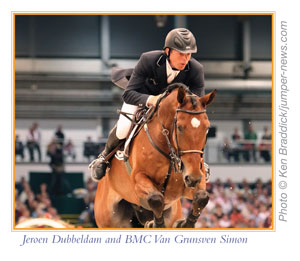
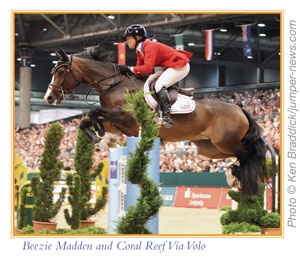
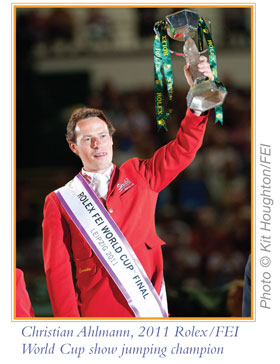 When riders in the top ten faulted or were carrying too many faults already, it all came down to the final two Germans. Kutscher and Cash had a devastating 12 faults, so the pressure was on Ahlmann. His final clear round gave Ahlmann the victory.
When riders in the top ten faulted or were carrying too many faults already, it all came down to the final two Germans. Kutscher and Cash had a devastating 12 faults, so the pressure was on Ahlmann. His final clear round gave Ahlmann the victory.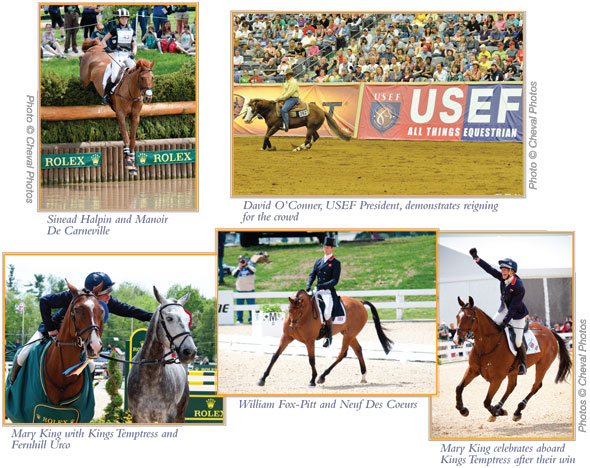
 With the competitive supplement industry, what is next for Royal Champion?
With the competitive supplement industry, what is next for Royal Champion?
